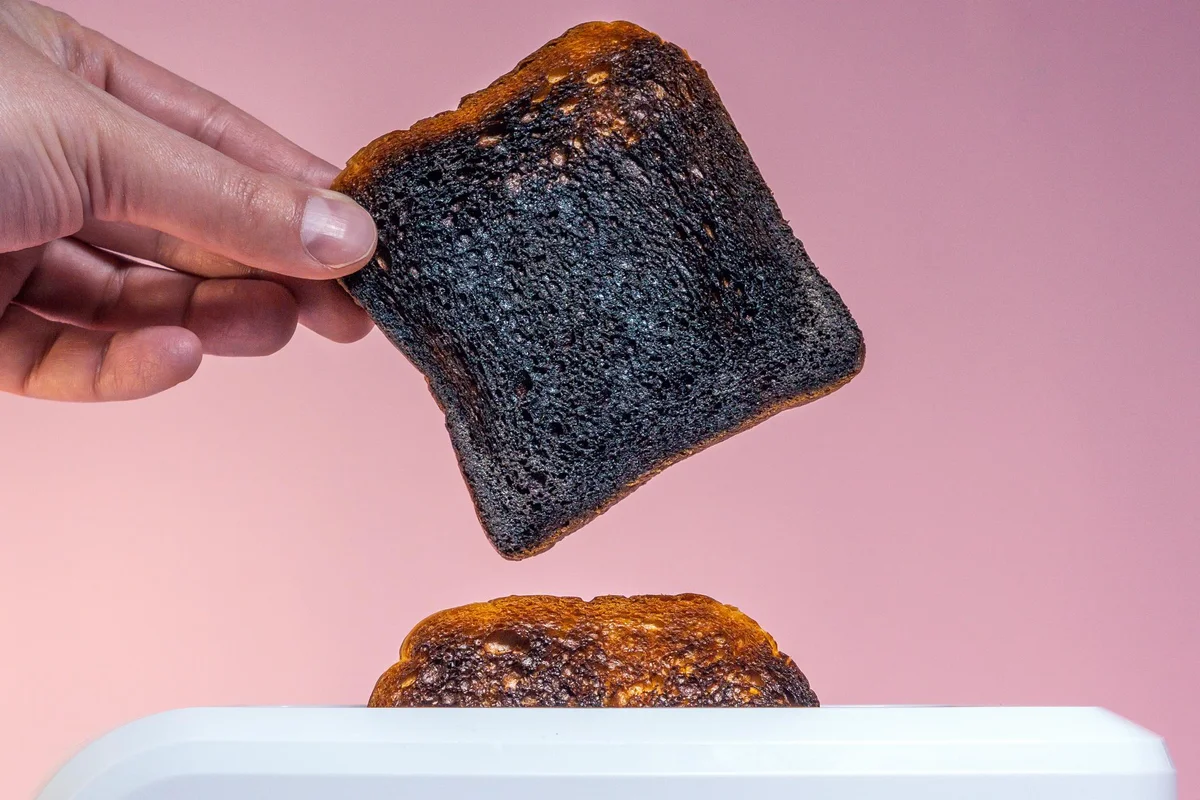If you're smelling burnt toast, the first thing you should probably do is check your toaster.
Although lots of people think smelling something burning is a sign of a stroke, there's no solid evidence this is true. The idea of smelling phantom burning toast may be kind of amusing — but strokes are serious.
They affect approximately 795,000 Americans each year — and around 137,000 of those people die as a result. While most people who have strokes are men, most of those who die are women, particularly Black women, who are more likely to die from a stroke than non-Hispanic white women.
We reached out to Dr. Gayatri Devi, a clinical professor of neurology and director of Park Avenue Neurology in New York and member of HealthyWomen's Women's Health Advisory Council, to get more information about symptoms, risk factors and how to decrease your stroke risk.
What is a stroke?
A stroke occurs when the brain's blood supply is reduced or stopped, which causes the brain to be deprived of oxygen and nutrients. This can result in temporary or permanent conditions, including paralysis, memory loss, difficulty swallowing or speaking, pain or tingling and sometimes death.
What are the first signs of a stroke?
The first signs of a stroke include:
- Sudden numbness or weakness in any part of your body
- Trouble expressing yourself with language, including the inability to speak or understand what's being said to you
- Difficulty walking
- Sudden onset of any kind of confusion
- A sudden and painful headache
How do the warning signs of a stroke differ from men to women?
While the symptoms for men and women are generally the same, women may also experience fatigue, memory issues, a feeling of general weakness and nausea or vomiting.
How early do the warning signs appear before a stroke happens, and which symptoms of a stroke are more likely to start days in advance?
Sometimes, people will experience slurred or garbled speech, confusion, blindness or double vision and loss, which can last for a few minutes up to an hour. This is known as a transient ischemic attack (TIA) — also known as a mini-stroke — and the symptoms can occur hours or days before a stroke. Around 15% of people who have a stroke have previously had a TIA. People are at higher risk of having a stroke within 90 days after a TIA. People who have a TIA should seek medical help right away.
What are misconceptions people have about strokes?
There is a myth that the smell of burnt toast means you're having a stroke. But the evidence is inconclusive as to whether phantom smells — known as olfactory hallucinations or phantosmia — are associated with having a stroke, and phantosmia seems to be more associated with side effects of certain medications or sinus problems than brain disorders.
There is also a common belief that strokes only affect older adults, but 10%-15% of strokes occur in people ages 18 to 45.
What other conditions can mimic stroke symptoms?
Conditions and diseases that can resemble symptoms of strokes include:
- Brain tumors, specifically glioma, meningioma and adenoma/pituitary
- Migraine
- Seizures
- Toxic or metabolic disorders, including hypoglycemia, hypercalcemia and hyponatremia
- Infectious diseases
- Psychological disorders
What should people know about “silent strokes”?
A silent stroke — medically known as a silent brain infarction — happens when blood flow is interrupted to a part of the brain that doesn't support any of the body's vital functions, including speech, vision or movement. This means a person does not have any symptoms and the only way they could know if they had a silent stroke is through an MRI or CT scan. Silent strokes can increase the risk of having a stroke attack and dementia.
What are risk factors for a stroke?
Risk factors include:
- Demographics: Being age 65 and older; having African American, Hispanic American, Native American or Native Alaskan ethnicity; living in the southeastern United States; and being male.
- Having a family history of strokes.
- Conditions: Previous stroke or TIA, high blood pressure, high cholesterol, heart disease, diabetes and sickle cell disease.
- Environmental factors: Smoking, physical inactivity, obesity and drinking too much alcohol.
- Specific to women: Migraine with aura (while both men and women have migraine headaches, they are more common in women), pregnancy, menopause and using oral contraceptives that are high in estrogen.
When should people seek medical help?
Use the F.A.S.T. method to determine whether to seek medical assistance. If the answer is yes to any of the questions, call 911 immediately:
- F: Is the person's face drooping?
- A: Do they have weakness in one of their arms?
- S: Are they having difficulty with their speech?
- T: If so, it is time to call emergency care providers.
It's important to get treatment quickly to give the person the best possible outcome.
How can people lower their risk factors for stroke?
To lower their risk of stroke, people can make lifestyle adjustments such as:
- Increasing physical activity
- Keeping blood sugar, blood pressure and cholesterol levels in check
- Quitting smoking
- Eating healthy
- Maintaining a healthy weight for their body type
- Keeping tabs on existing conditions such as heart disease, diabetes, metabolic syndrome, blood clots, lupus and rheumatoid arthritis
- Worried About Stroke? Know the Facts - HealthyWomen ›
- Majority of U.S. Women Have Limited Knowledge of Stroke ... ›
- Stroke Awareness: Early Intervention Saves Lives - HealthyWomen ›
- Is It Fatigue Or a Stroke? Women Shouldn't Ignore These Warning ... ›
- Stroke Symptoms Checklist - HealthyWomen ›
- Stroke - HealthyWomen ›
- Signs and Symptoms of a Heart Attack and Stroke - HealthyWomen ›







